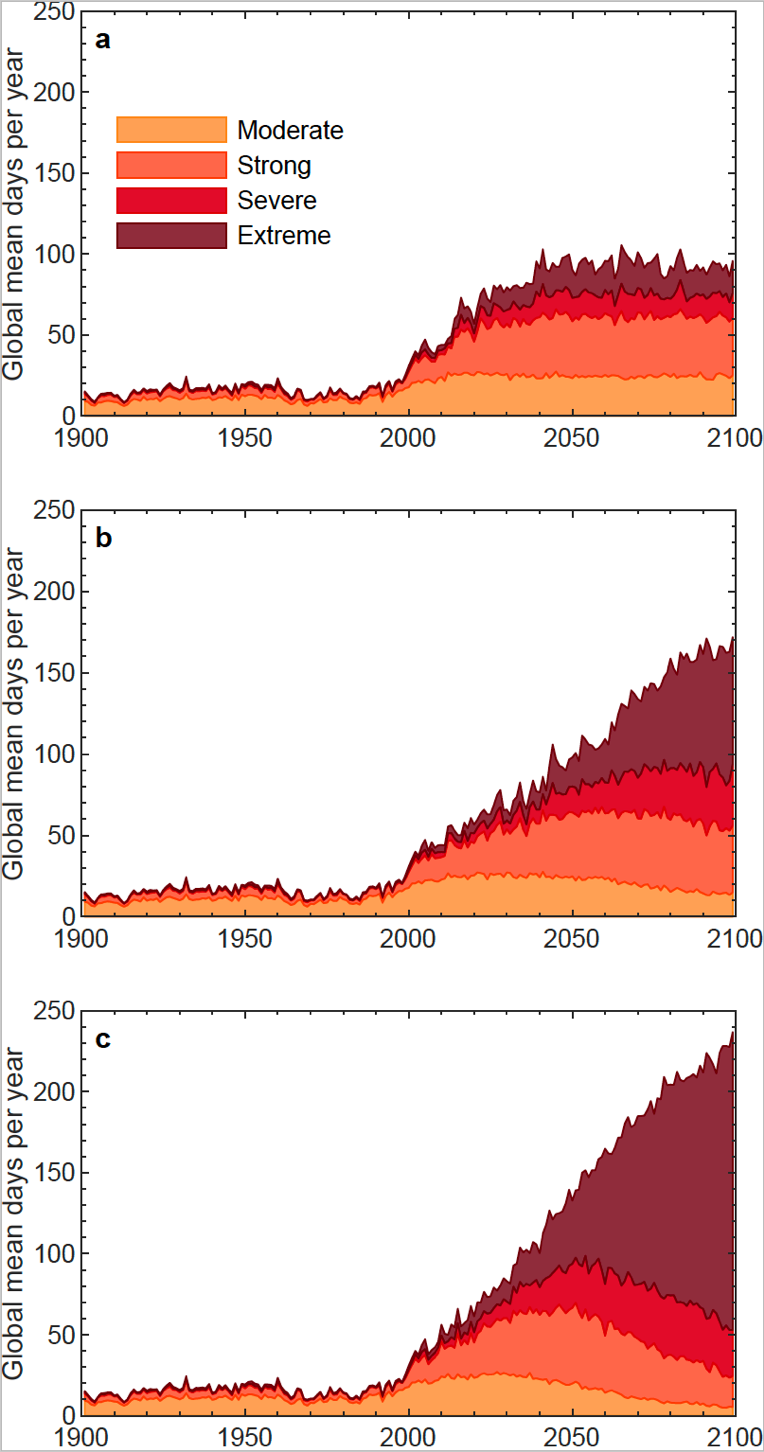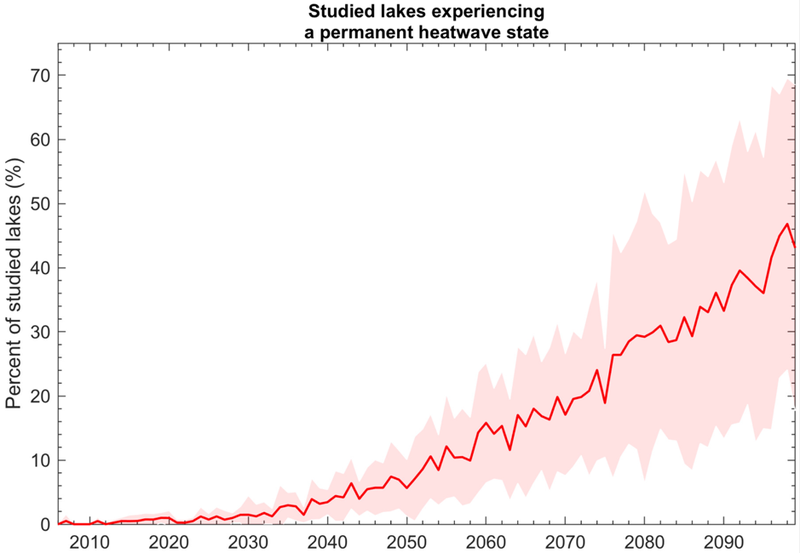21. Januar 2021
Lake heatwaves to increase due to climate change
Lake heatwaves may become hotter and longer, new study suggests
Lake heatwaves – periods of extreme warm surface water temperature in lakes – may become hotter and longer by the end of the 21st century, according to a study published today in Nature, increasing the link between climate change and extreme events.
The modelling study, which is validated using satellite observation records generated by ESA’s Climate Change Initiative, shows that under a high greenhouse gas emissions scenario, the average duration of lake heatwaves could increase by around three months on average, with some lakes reaching a permanent heatwave state.
The increasing frequency of marine and land heatwaves has been linked to global warming in previous studies. However, less is known about lake heatwaves and how they will be affected by global warming.
Iestyn Woolway, a research fellow with ESA’s Climate Office, and colleagues modelled the impact of heatwaves on 702 lakes from 1901 to 2099 distributed all over the globe in this latest study. They show, for the first time, that heatwaves frequently occur in lakes, and that they are very sensitive to climatic variations.
Under future climate change, their multi-model projections demonstrate that lake heatwaves will become progressively worse as the century progresses, particularly under a high greenhouse gas emissions scenario. The average temperature of lake heatwaves is likely to increase from approximately 3.7°C to 5.4°C, while the average duration will increase from around a week to more than three months by the end of the 21st century.
Under the most conservative emissions scenario, the average increases in temperature and duration are around 4.0°C and one month, respectively. The authors found that heatwaves would be longer lasting but less intense in deeper lakes.

As lakes warm over the 21st century, heatwaves will extend across all seasons and some lakes will reach a permanent heatwave state, the authors suggest.
Iestyn Woolway commented, “Agencies from around the world recently reported that 2020 was part of the warmest decade on record, and climate projections suggest that this warming will continue. Unless climate change is mitigated, our projections suggest that lake heatwaves will become increasingly severe this century, threatening lake biodiversity and pushing ecosystems to the limits of their resilience.”

Satellite observations - a key role
Given their ability to monitor lake properties on a global scale over multiple decades, satellites observations prove crucial in this study, with the authors using a long-term lakes satellite dataset generated by the ESA Climate Change Initiative (CCI).
Initially released last year, the freely available CCI lakes dataset provides information for 250 globally distributed lakes worldwide over the period 1995—2019. In addition to surface temperature, information on four other lake variables are also available, including daily observations for lake level, water extent, ice cover and reflectance, which help support studies related to lakes and climate.
The next version of the dataset, anticipated for release later this year, will increase the number of lakes for which data is provided to around 2000, to further support studies aimed at understanding the response of lakes to climate change.
ESA’s Climate Change Initiative is a research programme that merges multiple sources of satellite data, to create long time series for 21 key aspects of the climate, known as Essential Climate Variables, including lakes.
Paper reference:
R. Iestyn Woolway Eleanor Jennings, Tom Shatwell, Malgorzata Golub, Don C. Pierson & Stephen C. Maberly (2021) Lake heatwaves under climate change. Nature. https://doi.org/10.1038/s41586-020-03119-1
Lake dataset reference:
Crétaux, J.-F.; Merchant, C.J.; Duguay, C.; Simis, S.; Calmettes, B.; Bergé-Nguyen, M.; Wu, Y.; Zhang, D.; Carrea, L.; Liu, X.; Selmes, N.; Warren, M. (2020): ESA Lakes Climate Change Initiative (Lakes_cci): Lake products, Version 1.0. Centre for Environmental Data Analysis, 08 June 2020. doi:10.5285/3c324bb4ee394d0d876fe2e1db217378. http://dx.doi.org/10.5285/3c324bb4ee394d0d876fe2e1db217378

